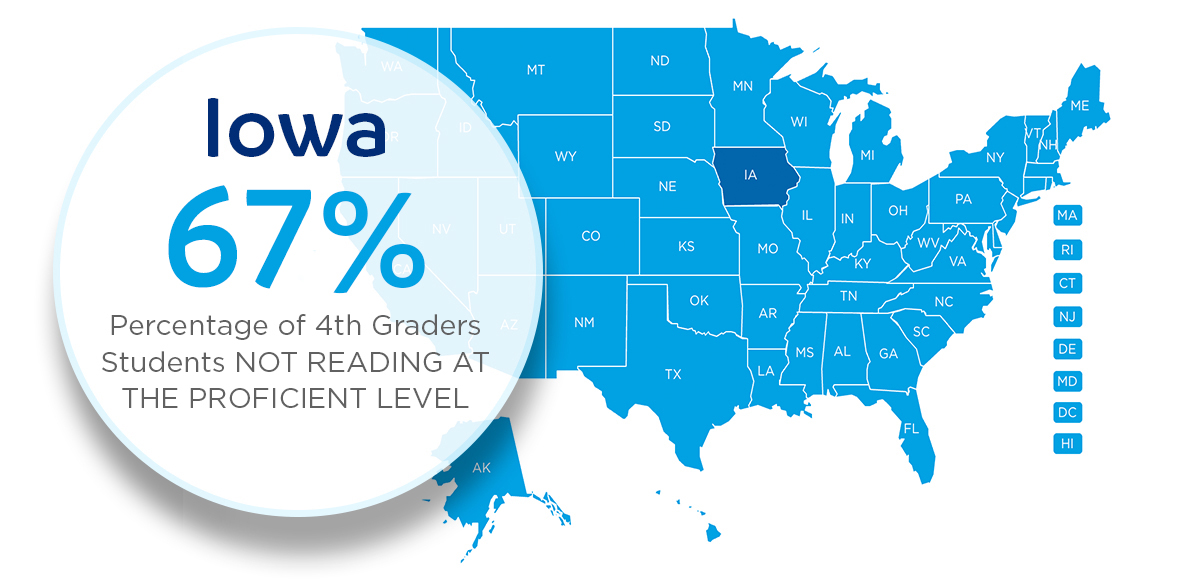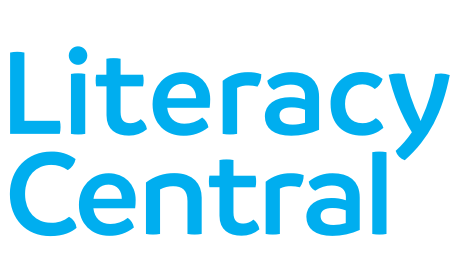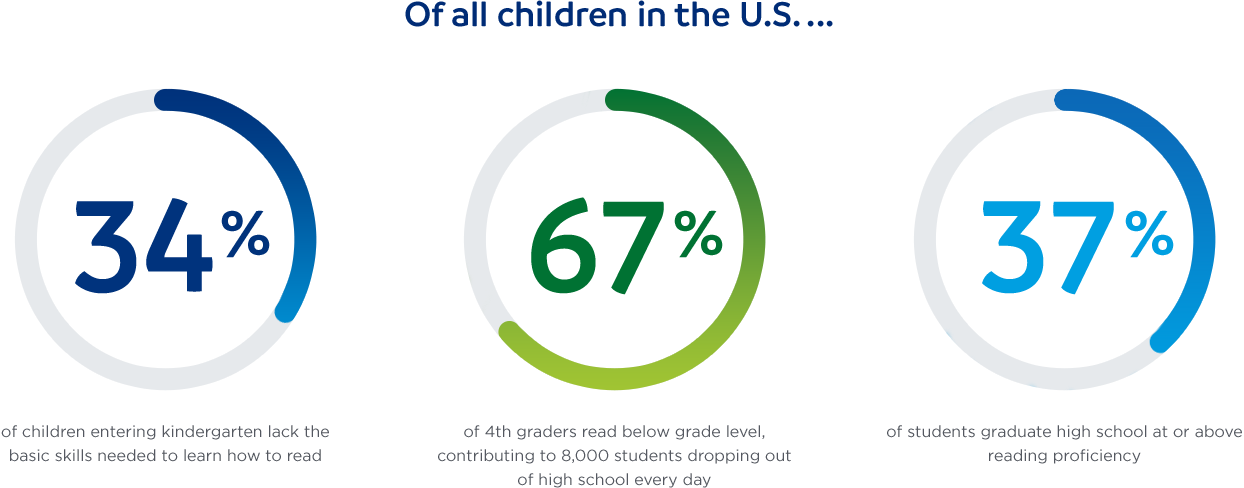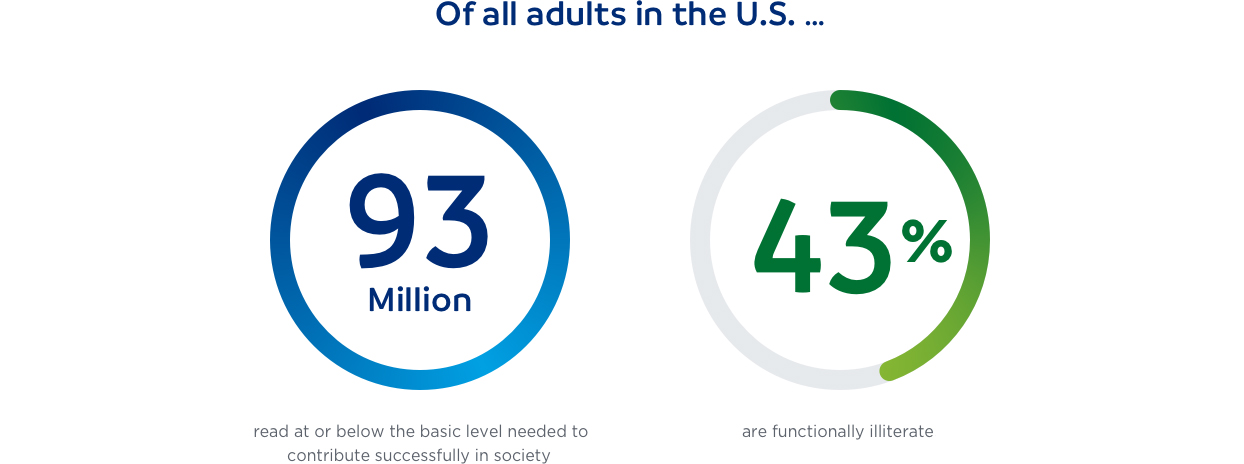There is a significant literacy crisis in America today. Twenty-five million children in the U.S. cannot read proficiently (Based on an analysis of NAEP test scores).
Many recognize there are issues around literacy, but do not see it as the massive, systemic and generational problem that plagues our society as these children grow and enter adulthood:
Get Your State Statistics
When comparing state/jurisdiction average scores in reading for fourth-grade public school students in 2022 with those from 2019, the previous assessment year, 30 states scored lower; no states scored higher; and 22 states has no significant change in scores. Check out RIF’s Literacy Facts map to see how children in your state are performing. Literacy Map →

Literacy Insights
The children’s literacy landscape is constantly changing and evolving. Below please find articles, research and news to help keep you updated and informed.




